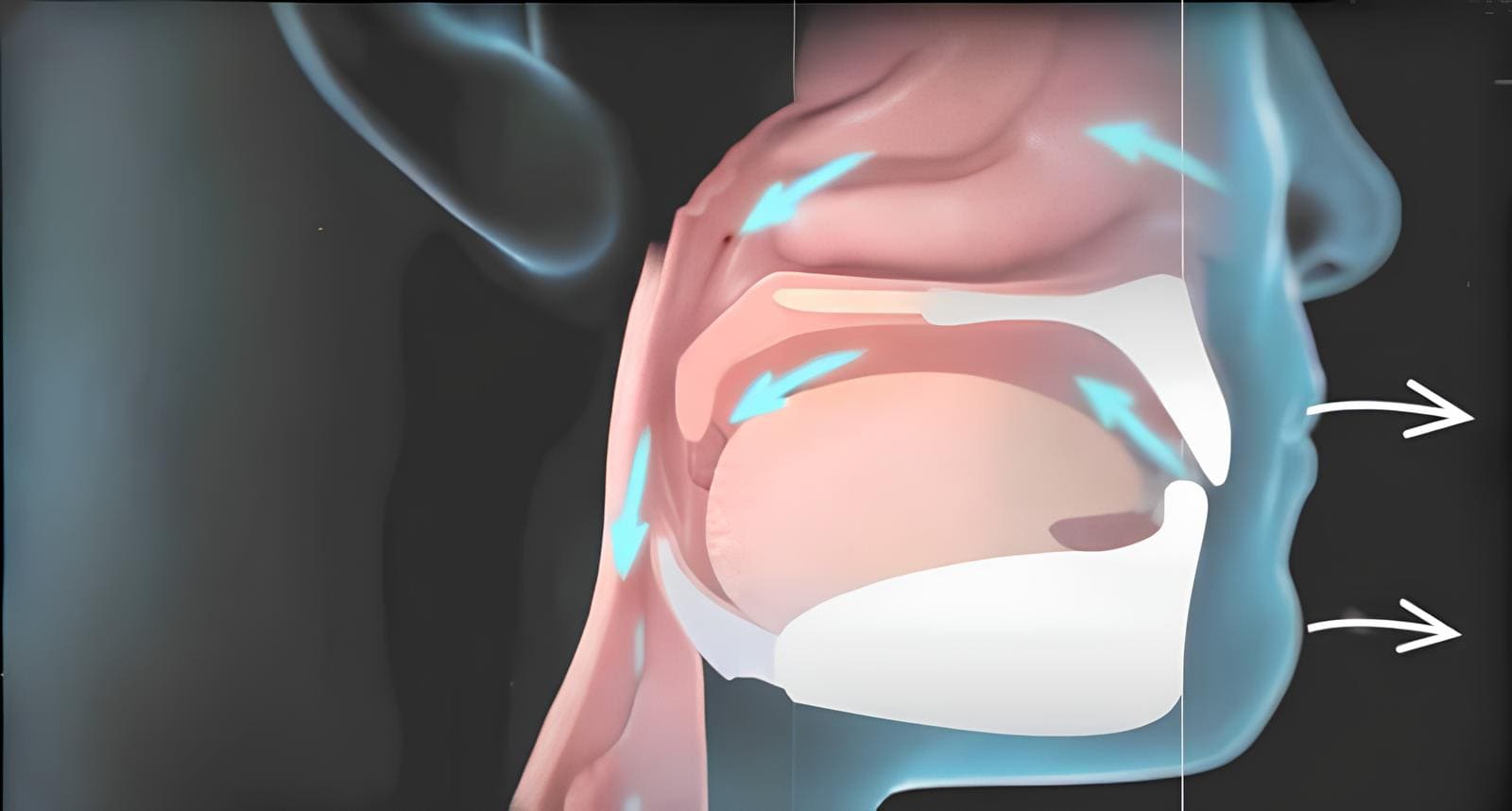Orthognathic surgery improves function and aesthetics by repositioning facial bones. Nasal breathing is vital, impacting… See more →
If you’re experiencing any of the following symptoms, you might be a candidate for orthognathic surgery:
Orthognathic surgery is one of the most powerful, life-changing facial interventions.
It consists of the repositioning of the maxilla, mandible and chin. ORTHO means alignment and GNATHIC comes from the Greek word for the jaw.
While orthognathic surgery can significantly improve facial aesthetics, its primary goals are functional:
It’s important to understand that orthognathic surgery is not merely a cosmetic procedure to serve aesthetic trends, but a functional surgery aimed at improving overall oral and facial health.
The face is our most unique and distinguishable feature. Several genetic and environmental factors contribute to our final adult facial morphology.
For example, proper nasal breathing is crucial for mid-face development. Children without correct nasal breathing may not develop proper upper jaw and mid-facial size. Additionally, their lower jaw may tend to grow downward.
Facial imbalances can range from minor mismatches in proportions to more severe conditions such as cleft palate, craniosynostosis, or hemifacial microsomia. These more complex cases fall under the broader field of craniofacial surgery.

The most common treatment protocol for orthognathic surgery involves:
While individual experiences may vary, here’s a general recovery timeline:
Note that this timeline can vary. Factors such as smoking and chronic illnesses may lead to longer recovery times.
The main and most concerning side effect of jaw surgery is the chin numbness. Not all patients are affected. Complete damage of the nerve is a non-negligible risk, but recent imaging technology and piezo instruments, that use ultrasound cutting technology, tend to reduce this risk.
Orthognathic surgery produces highly stable results. However, there can be a regression, usually of some millimetres, rarely to the same preoperative position. Why this? Because the muscle system will try to pull the skeleton back to its previous position. This risk will be reduced when using high quality fixing material, correct planning and surgical technique and if the patient complies correctly with the treatment plan.
Achieving a well-balanced face involves considering specific proportions of facial soft tissues and skeletal landmarks. These proportions are based on large anthropometric datasets collected over decades. While these guidelines help surgeons achieve facial harmony, it’s important to note that beauty standards vary across cultures and individuals. As the saying goes, “Beauty is in the eye of the beholder.”
Orthognathic surgery is one of the facial intervention with more impact, not only in the facial morphology, but also in head and neck functions, in particular: breathing.
A bimaxillary surgery is a total upper airway surgery, with clear advantages. A maxillomandibular advancement compared to other interventional techniques, produces higher rates of cure and success in obstructive sleep apnea patients, carefully selected after sleep studies and airway imaging.
To provide full functional and morphological balance, the surgical plan might include additional procedures either during the same surgery or at a later time, such as:

The surgery typically takes 2-4 hours, depending on the complexity of the case.
Most patients require braces both before and after surgery to ensure optimal teeth alignment.
While traditional braces are most commonly used in conjunction with orthognathic surgery, Invisalign can be an option in some cases. The decision depends on the complexity of your case and fully consent to the risk it involves. In general:
While initial recovery takes about 6-8 weeks, full healing can take up to a year.
Coverage varies according to the insurance provider and specific policy. In Portugal, some policies now offer partial coverage of costs, however, there are still various restrictions in place. Reimbursement of expenses may be easier to obtain when there is a diagnosis of sleep apnea. Always check with your insurance agent for details about your specific policy
Ideally, patients should have finished growing (usually late teens for girls, early twenties for boys), but there’s no upper age limit if you’re in good health.
Yes, your facial appearance will change. The extent depends on the specific procedures performed.
Most patients experience discomfort rather than severe pain. Your surgeon will prescribe appropriate pain management.
No, there are typically no visible skin scars as the surgical approach is done through the mouth.
Yes, once fully healed, you should be able to eat normally and may even find chewing easier than before. During the recovery period, there are many food options available, including rice, pasta, boiled fish, and vegetables. It’s important to avoid sugary foods during this time to promote proper healing.
Return to work time varies depending on your job type:
If you’re experiencing jaw-related issues or are concerned about your facial balance, orthognathic surgery might be the solution you’re looking for. Don’t let jaw problems affect your quality of life. Contact our experienced team today for a comprehensive evaluation and personalized treatment plan. Take the first step towards a healthier, more balanced you!
Here are some of scientific papers mentioned throughout the video and other worthmentioning:
Check out what our patients have to say about their experiences with our clinic. Their feedback highlights the quality of care, professionalism, and positive outcomes they have received. Read their testimonials to see how we have helped improve their health, self-esteem, and overall quality of life.


Use the contact details below to contact us about “Faces – Facial Surgery” in Lisboa or Évora
Follow us on our social media channels
This website respects the current privacy policies. For more information, read our terms of service. We improve our products and advertising by using Microsoft Clarity to see how you use our website. By using our site, you agree that we and Microsoft can collect and use this data. Our privacy statement has more details.